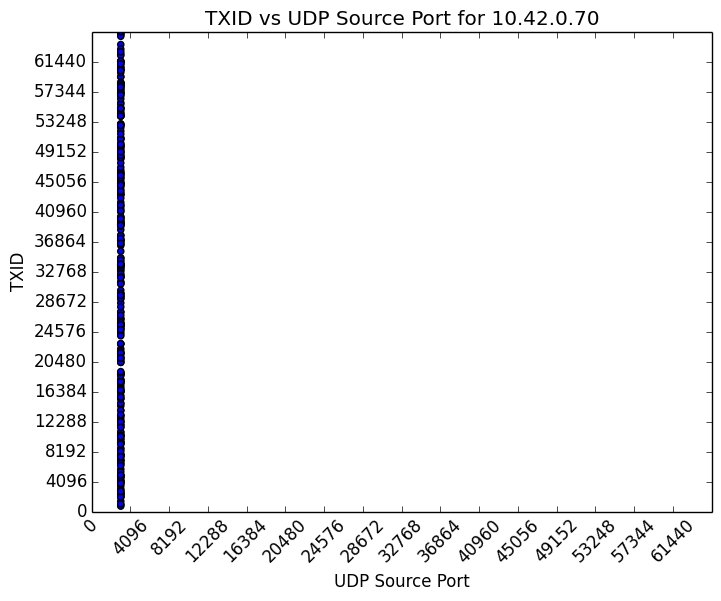
ReadyNet WRT300N-DD Wireless Router contains multiple vulnerabilities
CVSS2
Attack Vector
NETWORK
Attack Complexity
LOW
Authentication
NONE
Confidentiality Impact
COMPLETE
Integrity Impact
COMPLETE
Availability Impact
COMPLETE
AV:N/AC:L/Au:N/C:C/I:C/A:C
CVSS3
Attack Vector
NETWORK
Attack Complexity
LOW
Privileges Required
NONE
User Interaction
NONE
Scope
UNCHANGED
Confidentiality Impact
HIGH
Integrity Impact
HIGH
Availability Impact
HIGH
CVSS:3.0/AV:N/AC:L/PR:N/UI:N/S:U/C:H/I:H/A:H
EPSS
Percentile
77.3%
Overview
ReadyNet WRT300N-DD Wireless Router, firmware version 1.0.26, uses default credentials, is vulnerable to cross-site request forgery, and uses insufficiently random values for DNS queries.
Description
CWE-255: Credentials Management - CVE-2015-7280
The ReadyNet WRT300N-DD Wireless Router web administration interface uses non-random default credentials of admin:admin. A local area network attacker can gain privileged access to a vulnerable device’s web management interfaces or leverage default credentials in remote attacks such as cross-site request forgery.
CWE-352**: Cross-Site Request Forgery (CSRF) -**CVE-2015-7281
The ReadyNet WRT300N-DD contains a global CSRF vulnerability. An attacker can perform actions with the same permissions as a victim user, provided the victim has an active session and is induced to trigger the malicious request. Note that in combination with default credentials, an attacker can establish an active session as part of an attack and therefore would not require a victim to be logged in.
The CVSS score below reflects CVE-2015-7281.
CWE-330: Use of Insufficiently Random Values- CVE-2015-7282
The ReadyNet WRT300N-DD uses static source ports for all DNS queries originating from the local area network (LAN). An attacker with the ability to spoof DNS responses can cause WRT300N-DD LAN clients to contact incorrect or malicious hosts under the attacker’s control.
The following graph shows a distribution of 330 DNS queries captured on the WAN port of the WRT300N-DD:

Impact
A remote, unauthenticated attacker may be able to spoof DNS responses to cause WRT300N-DD LAN clients to contact attacker-controlled hosts or induce an authenticated user into making an unintentional request to the web server that will be treated as an authentic request. A local area network attacker can take complete control of a device using default admin credentials.
Solution
The CERT/CC is currently unaware of a practical solution to this problem. Until these vulnerabilities are addressed, users should consider the following workarounds.
Restrict access and use strong passwords
As a general good security practice, only allow trusted hosts to connect to the LAN. Implement strong passwords for WiFi and for the web management interface. Strong passwords can help to prevent blind guessing attempts that would establish sessions for CSRF attacks. LAN hosts should not browse the Internet while the web management interface has an active session in a browser tab.
Note that there are no practical workarounds for the DNS spoofing vulnerability, as general users are unlikely to be able to monitor traffic entering the router’s WAN port.
Vendor Information
167992
Filter by status: All Affected Not Affected Unknown
Filter by content: __ Additional information available
__ Sort by: Status Alphabetical
Expand all
Javascript is disabled. Click here to view vendors.
ReadyNet Affected
Notified: September 15, 2015 Updated: December 10, 2015
Status
Affected
Vendor Statement
We have not received a statement from the vendor.
Vendor Information
We are not aware of further vendor information regarding this vulnerability.
CVSS Metrics
| Group | Score | Vector |
|---|---|---|
| Base | 6.8 | AV:N/AC:M/Au:N/C:P/I:P/A:P |
| Temporal | 6.5 | E:F/RL:U/RC:C |
| Environmental | 1.6 | CDP:ND/TD:L/CR:ND/IR:ND/AR:ND |
References
<http://www.readynetsolutions.com/products/wrt300n-dd-wireless-router/>
Acknowledgements
These vulnerabilities were reported by Joel Land of the CERT/CC.
This document was written by Joel Land.
Other Information
| CVE IDs: | CVE-2015-7280, CVE-2015-7281, CVE-2015-7282 |
|---|---|
| Date Public: | 2015-12-10 Date First Published: |
CVSS2
Attack Vector
NETWORK
Attack Complexity
LOW
Authentication
NONE
Confidentiality Impact
COMPLETE
Integrity Impact
COMPLETE
Availability Impact
COMPLETE
AV:N/AC:L/Au:N/C:C/I:C/A:C
CVSS3
Attack Vector
NETWORK
Attack Complexity
LOW
Privileges Required
NONE
User Interaction
NONE
Scope
UNCHANGED
Confidentiality Impact
HIGH
Integrity Impact
HIGH
Availability Impact
HIGH
CVSS:3.0/AV:N/AC:L/PR:N/UI:N/S:U/C:H/I:H/A:H
EPSS
Percentile
77.3%